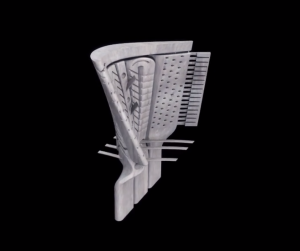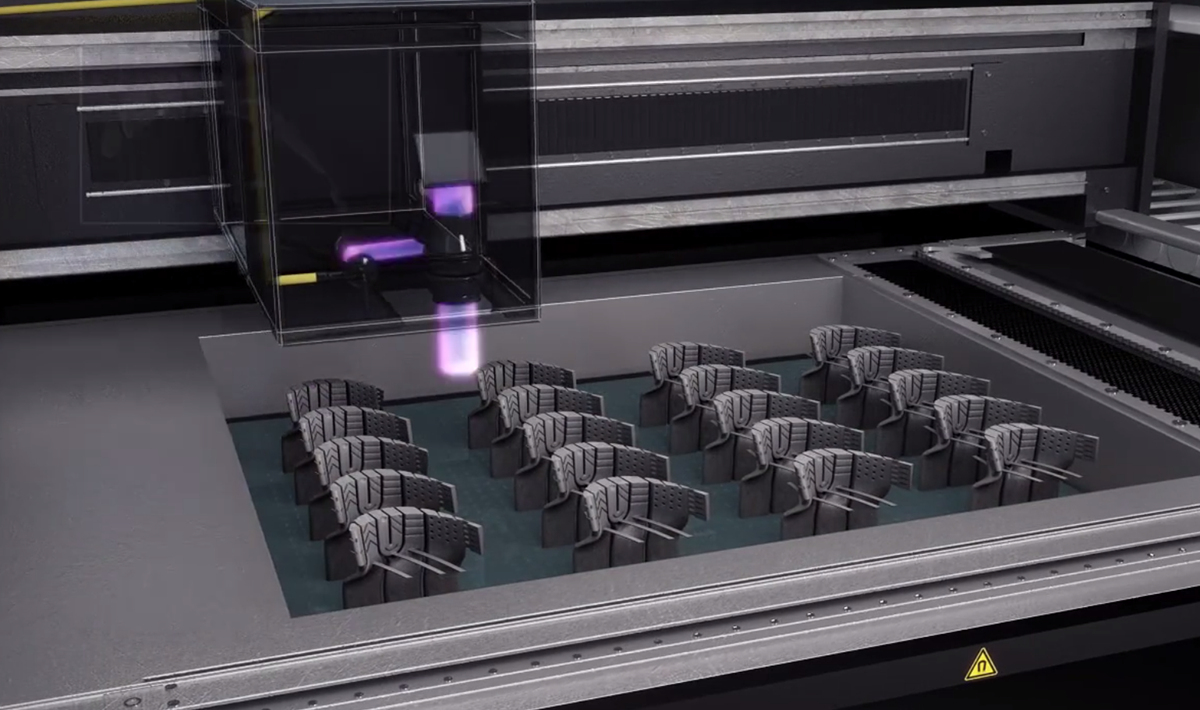Last week Atlanta start-up DDM Systems announced that its new LAMP – Large Area Maskless Photopolymerization – 3D printers will be available in early 2015. The new line of 3D printers will use a ceramic resin material cured with UV light to produce cores and moulds used in investment casting for the automotive and aerospace industries. This new additive manufacturing process will drastically reduce the amount of time needed for the production of complex metal parts, according to the company.
The LAMP technology is one of the most exciting industrial 3D printing advancements that I’ve seen in some time. The process is sort of a hybrid of stereolithography and sand or gypsum powder based 3D printing, and it brings the best of both of those processes to the table.
The LAMP process starts with a thin layer of a ceramic resin being spread onto a build platform. As with powder 3D printing, a moving head prints the object layer into the resin, however instead of an inkjet head dispensing a binding agent powerful UV lights project the image into the resin and solidify it. This allows anything from highly detailed parts to high-precision cores and integral-cored moulds to be created quickly and with a high print resolution. By combining the speed of powder printing with the high level of detail associated with stereolithography the process drastically shakes up the investment casting process. As the extremely dramatic voice in this video emphasises, it is quite a disruptive new technology.
If you haven’t heard of DDM Systems or the LAMP technology, don’t worry you’re not alone. The process was invented by Suman Das who heads up Georgia Tech’s Direct Digital Manufacturing Lab – where LAMP was developed – and his team of researchers. The research was funded by the DoD and DARPA’s Disruptive Manufacturing Technology project. Licensing the tech from his school, Das started DDM Systems with John Halloran in 2012 and began developing the technology into a commercial manufacturing process.
“We have been delighted by the upsurge of interest in our LAMP technology and have taken steps to accelerate the commercialization of this technology to meet immediate market demand,” said Das, CEO of DDM Systems.
The new machine has an adjustable build platform that can be configured between 10in x 10in x 12in for small-lot rapid prototyping up to 24in x 24in x 24in for full-scale production. The unit is completely self contained, so all the material prep, object handling and post-processing will be fully integrated into the 3D printer.

In traditional investment casting production, there are generally 12 major process steps involved, and LAMP technology will completely eliminate seven of them. According to DDM Systems core and wax tooling design, core and wax tooling manufacture, ceramic injection, wax injection, wax melt-out, slurry coating, and stucco coating are all completely eliminated with this new process. This reduction of required steps drastically reduces the amount of time and associated costs with investment casting.
Don’t let the melodramatic WWE-type announcer voice in the above video fool you, if DDM Systems’ new 3D printer does what it says it will, then this is probably the first time in years that new 3D printing technology being called disruptive is actually a disruptive new technology and not just a marketing buzzword.




